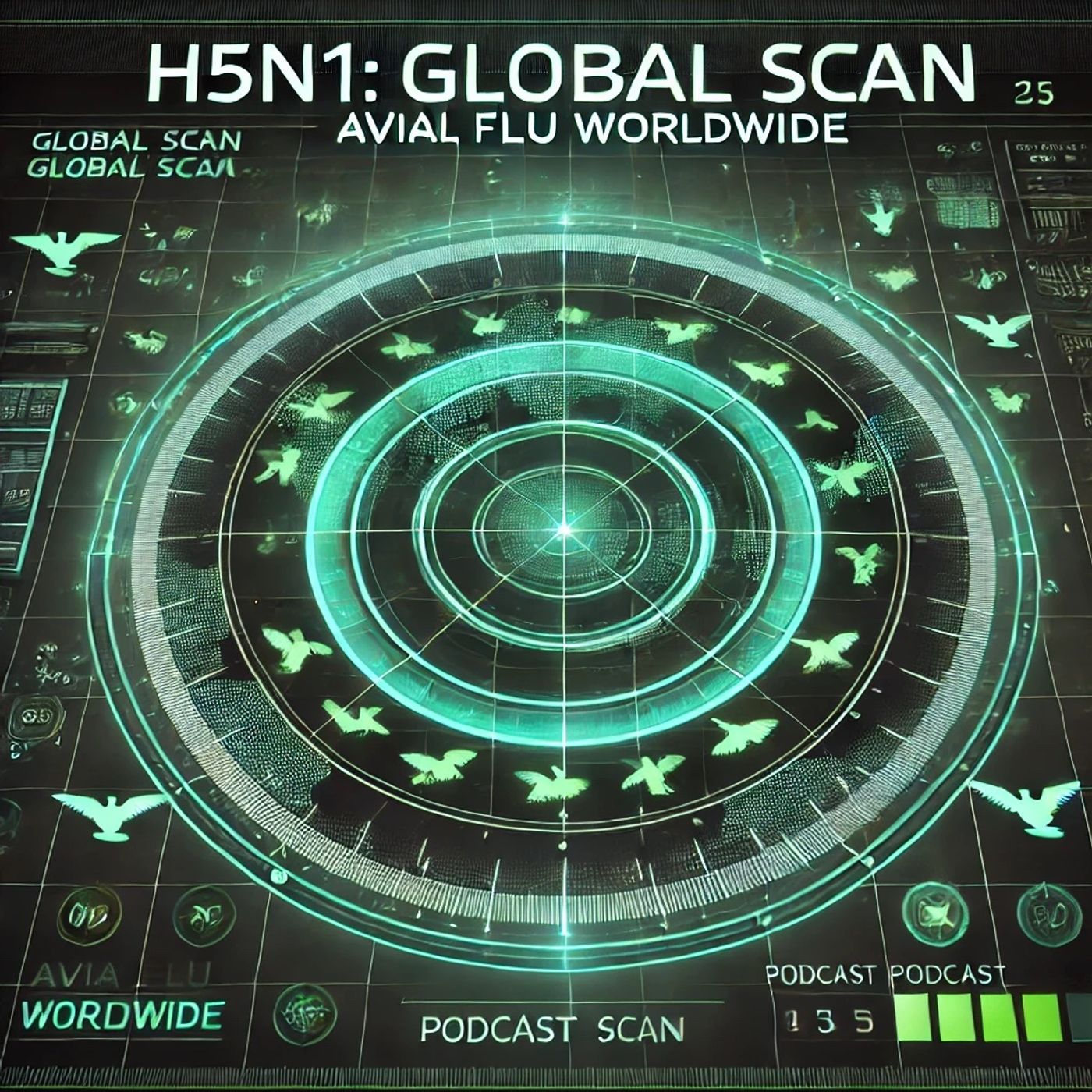Podcast Episode Details
Back to Podcast Episodes
H5N1 Avian Flu Surges Globally: 26 Human Cases Reported in 2025, Challenging Poultry and Public Health Sectors
Welcome to H5N1 Global Scan: Avian Flu Worldwide. In the past year, the highly pathogenic H5N1 avian influenza virus has continued to affect both animals and people across the world. According to the CDC, between January and early August 2025, 26 human infections were detected globally, with 11 fatalities, mainly in Cambodia, India, and Mexico. Most infections occurred after direct contact with sick or dead poultry, underscoring the continued risk that avian flu poses to populations with close animal exposure.
Let’s break down the continental impact. In Africa and Asia, large-scale outbreaks have led to animal losses and sporadic human cases, with Cambodia seeing an unusual monthly surge in June, as reported by the WHO. Since 2003, Cambodia has documented 83 human cases, nearly half of which have been fatal. In India, avian flu continues to threaten both poultry production and public health, while the Middle East and East Asia maintain high surveillance.
North America has been heavily affected, particularly the United States, where the USDA has reported 109 avian influenza outbreaks in poultry across 32 states as of March 2025. The virus has also been detected in wild birds and dairy cattle, prompting the US Department of Agriculture to invest $1 billion in outbreak response, producer support, and biosecurity measures.
In Latin America, countries such as Peru have reported outbreaks among backyard poultry, leading to enhanced regional monitoring. Europe, meanwhile, remains vigilant due to continued spread among wild birds and recurring detection in farm animals, with the United Kingdom recently logging human and animal cases.
A major area of challenge is the virus’s ability to jump species. The PAHO/WHO highlights recent detections in non-avian species, including mammals like cattle and even marine animals, spotlighting the complex cross-border risks.
On the international stage, the World Health Organization and the Food and Agriculture Organization lead coordination and response. The WHO reiterates the global risk remains low for the general population but moderate for those with occupational exposure. The FAO tracks outbreaks and encourages biosecurity protocols worldwide, stressing the importance of reporting and containment.
Research initiatives have stepped up. International consortia have accelerated vaccine development—though a universally effective H5N1 vaccine for humans is still in clinical trials. Countries like the United States focus on targeted surveillance, rapid diagnostics, and, where available, pre-pandemic vaccine stockpiling. The EU and Asian powers ramp up animal vaccination campaigns and virus monitoring in migratory birds.
Approaches to containment vary: the US prioritizes rapid culling and compensation, India coordinates with local governments for farm quarantines, the UK ramps up animal testing and occupational health guidance, while Cambodia and Mexico focus on community awareness and stricter market controls.
Global trade continues to feel the squeeze—export bans, import restrictions, and supply shortages hit poultry markets, eggs, and even dairy industries, as the risk to food chains grows.
As H5N1 remains a clear example of One Health challenges, global vigilance, scientific collaboration, and strong local response remain vital. Thank you for joining us on H5N1 Global Scan: Avian Flu Worldwide. Tune in next week for another international focus. This has been a Quiet Please production. For more, check out Quiet Please Dot AI.
For more http://www.quietplease.ai
Get the best deals https://amzn.to/3ODvOta
Published on 17 hours ago